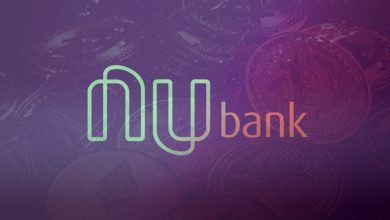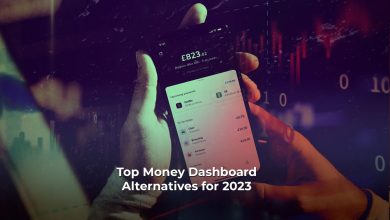Stake Review 2023: Is This Investment Platform Right for You?
Do you want to increase your financial security while investing? It's difficult to make the best choice when so many possibilities exist. This is why we’re here: to present you with a detailed analysis of Stake, a rapidly growing investment platform. To help you decide whether or not Stake is the ideal platform for your investment goals, we'll take a deeper look at its features, fees, and performance in this piece. What follows is a complete and comprehensive guide to the year 2023 in Stake.

Do you want to increase your financial security while investing? It’s difficult to make the best choice when so many possibilities exist. This is why we’re here: to present you with a detailed analysis of Stake, a rapidly growing investment platform. To help you decide whether or not Stake is the ideal platform for your investment goals, we’ll take a deeper look at its features, fees, and performance in this piece. What follows is a complete and comprehensive guide to the year 2023 in Stake.
What Is Stake? How Does It Work?
Stake is a digital trading platform for the American stock market and exchange-traded funds (ETFs). The platform first went live in Australia in 2017 and has since rolled out to the UK and NZ. Over 4,000 US-listed stocks and ETFs are available to Stake users, including many well-known tech names like Apple, Amazon, and Tesla. One of Stake’s defining characteristics is its support for fractional shares, meaning that customers can invest in less than a full share. This allows traders to more easily diversify their holdings by purchasing expensive equities that might otherwise be out of their price range. Stake also boasts a straightforward and easy-to-navigate interface, which appeals to first-time investors.

Features and Services Offered by Stake
Many investors prefer Stake because of its many useful features and services. Some of the most well-known are as follows:
- Fractional Investing: Because of Stake’s fractional share purchasing power, even the most financially constrained investors can afford to put money into high-priced stocks. This allows investors to spread their money out more easily over several different businesses and reduce their overall risk.
- No Commission Trading: Stake allows its users to purchase and sell stocks and ETFs without incurring any additional costs in the form of commissions. If an investor trades frequently, this can help them save money on transaction fees.
- Access to U.S. Markets: Stake provides investors with direct market access to more than 4,000 stocks and ETFs traded on U.S. exchanges, including shares of many well-known tech firms like Amazon, Apple, and Tesla. Because of this, consumers have access to a plethora of investment options, including those in companies that aren’t featured on competing platforms.
- User-Friendly Interface: Stake’s interface was created with novice investors in mind, so it’s simple and straightforward to use. The website may be accessed from a computer or a mobile device, and it provides users with several learning tools to help them become better investors.
- Advanced Order Types: Stake allows investors to specify conditions for purchasing and selling stocks by providing a variety of advanced order types, such as stop-loss and limit orders. Traders can use this to automate their actions and make better judgments about their portfolios.
Pros and Cons of Using Stake:
Investors considering adopting Stake should think carefully about its benefits and drawbacks. Some major benefits and drawbacks are listed below.
Pros:
No Commission: Investors that make regular trades will greatly benefit from Stake’s lack of trading commissions. Investors can cut down on transaction fees and boost their returns as a result.
Fractional Trading: Through Stake’s fractional investing feature, users can invest in a diversified portfolio of high-priced stocks without committing a large sum of money all at once.
User-Friendly Interface: Stake’s interface is made to be simple and straightforward, making it a good choice for first-time investors. Users can further their understanding of investing through the site’s wealth of instructional materials.
Access to US Markets: More than 4,000 stocks and ETFs listed on the US market are available to Stake investors. This includes many of the most well-known names in technology, such as Amazon, Apple, and Tesla. This broadens the investing options available to users.
Cons:
Limited Assets Classes: To invest in other asset classes, such as bonds or mutual funds, users will need to use a different platform than Stake, which only offers stocks and ETFs.
No Tax-Loss Harvesting: Stake’s lack of support for tax-loss harvesting is a drawback for investors who want to reduce their taxable income.
Limited Customer Support: Investors who would rather interact with a human being over the phone may be disappointed to learn that Stake’s customer assistance is limited to email and live chat.
Limited Research and Analysis Tools: Investors may find it more challenging to make informed investment selections on Stake due to the platform’s limited research and analytical tools when compared to other investing platforms.
Is Stake Right for You?
Your investment objectives and personal preferences will determine whether Stake fits you well. Stake is a wonderful alternative that provides a wide variety of investment opportunities for those interested in investing in US stocks and ETFs. Many investors who trade frequently and value diversification will appreciate the platform’s commission-free trading and fractional investing options.
If you need more robust capabilities for research and analysis, tax-loss harvesting, or access to asset classes beyond stocks and shares (including bonds and mutual funds), you may want to seek elsewhere. Stake’s limited customer care alternatives may also be a drawback if you prefer to communicate with a company by phone. When considering if Stake is suited for you, it is essential to consider your investment objectives and personal preferences.
Final Words:
In conclusion, Stake is a no-fee trading platform for buying and selling US equities and ETFs. The platform’s fractional investing option, straightforward design, and variety of complex order types all contribute to its widespread appeal among new traders and seasoned pros alike. Investors with more nuanced financial philosophies may be put off by the platform because of its restricted asset classes, research and analysis tools, and customer service alternatives. It is vital to weigh the benefits and drawbacks of using Stake before choosing if it is the correct platform for you and your investing needs.




